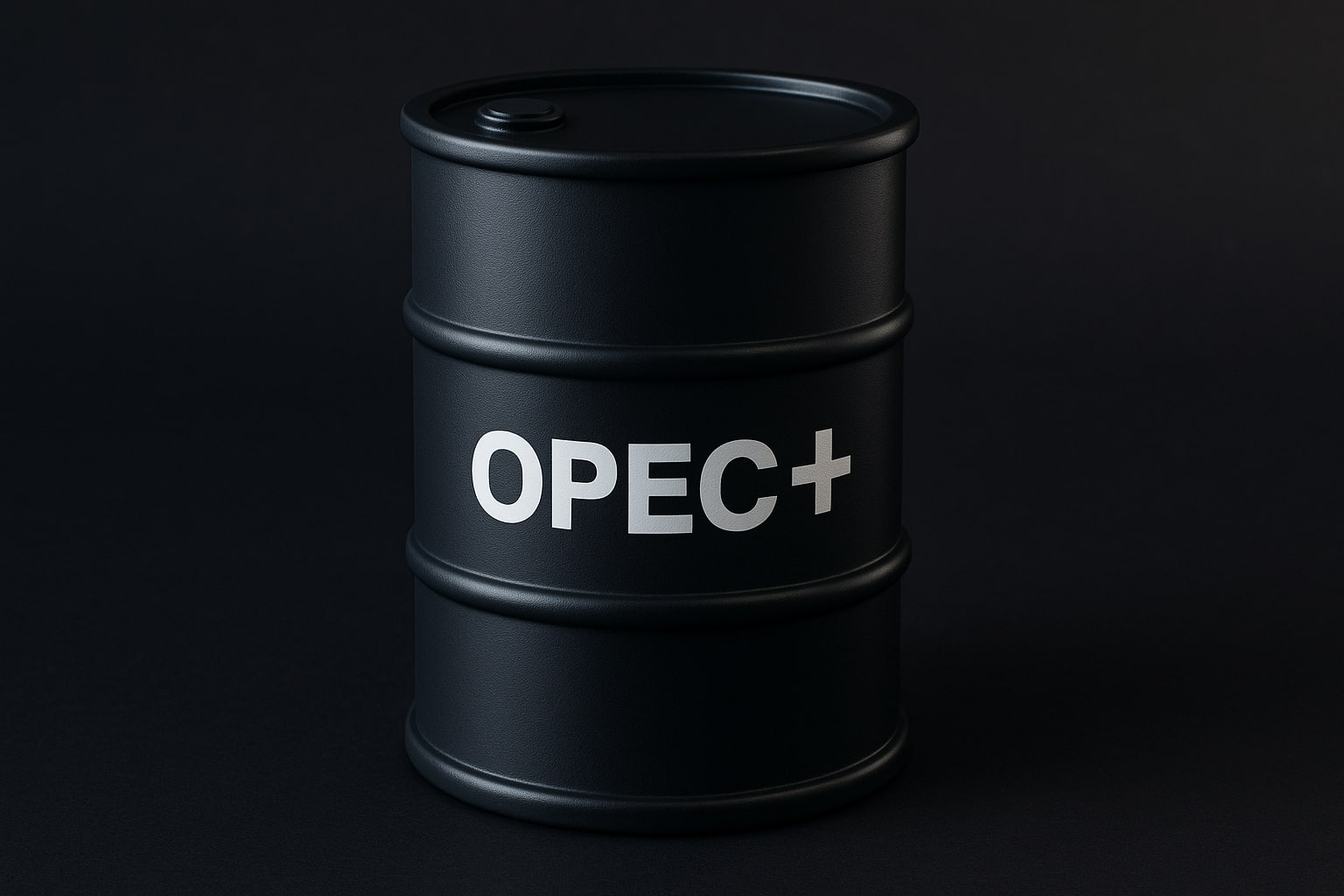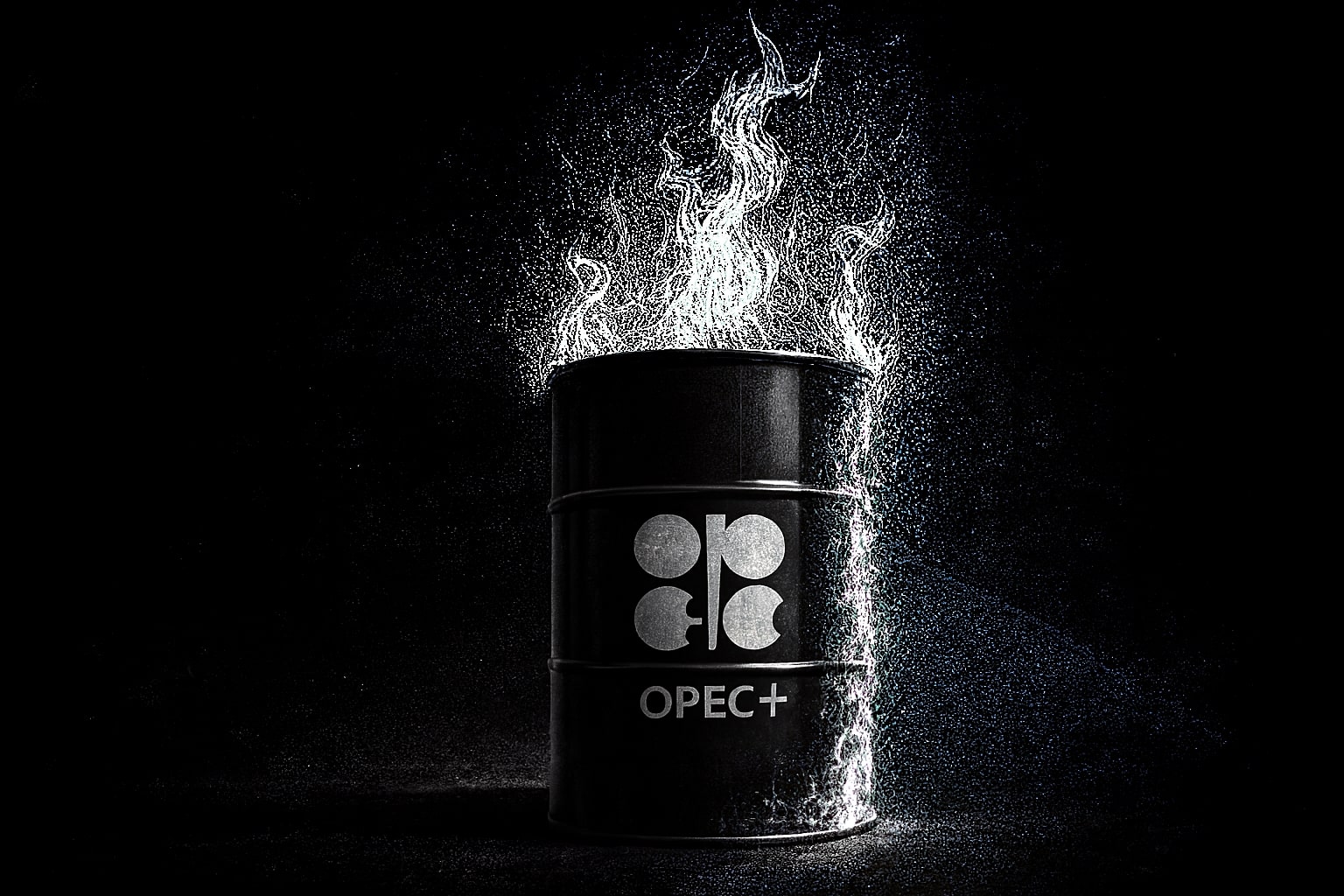
Oil Prices Hold WTI at $63 and Brent at $67 as Sanctions Tighten on Russia
Inventories build, OPEC+ output rises, and Russia expands crude flows to China amid Western caps | That's TradingNEWS
Oil Prices (WTI CL=F, Brent BZ=F) Under Pressure as Sanctions, Inventories, and Geopolitics Collide
WTI and Brent Trading Weak as Inventory Builds Pressure Market
West Texas Intermediate (CL=F) trades near $63.26 per barrel, slipping from $63.55 in the previous session, while Brent (BZ=F) is at $66.98, down from $67.27. U.S. Energy Information Administration data showed a 2.4 million barrel inventory build in the week ending August 29, bringing commercial stockpiles to 420.7 million barrels, 4% below the five-year average. The surprise build followed the prior week’s 2.4 million barrel draw and pushed futures lower, with gasoline inventories falling 3.8 million barrels and distillates climbing 1.7 million barrels. Refined product demand averaged 21.3 million barrels per day over the last four weeks, up 2.5% year-on-year, showing that consumption remains resilient even as prices weaken.
Russian Oil Revenues Face Fresh Pressure from Sanctions
Sanctions remain a core driver of oil market dynamics. Canada has joined the EU and UK in cutting the Russian oil price cap to $47.60 per barrel, down from the long-standing $60 level. The coordinated effort aims to further limit Moscow’s export revenues, which still account for a crucial funding channel despite Russia being the most sanctioned country globally. Research from Chatham House highlights that Russia exploited loopholes through its so-called “shadow fleet” and falsified insurance, allowing flows to continue above capped prices. With roughly 60% of Russia’s seaborne crude transiting Baltic straits, European dominance in reinsurance and shipping standards gives the bloc leverage to enforce stricter compliance even if U.S. support wanes. Analysts warn that the effectiveness of the cap depends on closing these loopholes and switching to CIF pricing rather than FOB to prevent inflated freight charges from distorting true revenue reductions.
Russia and China Expand Energy Ties as Western Caps Tighten
Despite sanctions, Russia is pushing deeper into Asia. Rosneft signed an agreement to supply 2.5 million additional tonnes of oil per year to China via Kazakhstan, adding to the 10.2 million tonnes exported through the same route in 2024. The deal was sealed during Vladimir Putin’s visit to Beijing, where Gazprom also advanced talks with CNPC on the Power of Siberia 2 gas pipeline, reinforcing Moscow’s eastward pivot. China remains Russia’s largest crude customer, cushioning lost sales in Europe. India too continues to exploit discounted Russian barrels, saving an estimated $12.6 billion on imports this year. Discounts for Indian refiners have widened under U.S. diplomatic pressure, demonstrating how geopolitics and sanctions shape global trade flows.
OPEC+ and Production Adjustments Reshape Supply Outlook
Saudi Arabia led OPEC output increases in August, raising supply as Brent slipped toward the $67 mark. Iraq, however, curtailed some sales after disputes over exports to sanctioned Indian refiners, highlighting the fragmented compliance picture. Meanwhile, Alberta posted record-high Canadian production, adding to global supply pressure, while U.S. shale output remains steady near 13.3 million barrels per day. The International Energy Agency is considering Brazil’s membership bid, signaling that non-OPEC producers are gaining influence. Collectively, higher output from multiple regions reinforces the bearish pressure already weighing on futures.
Shipping Orders Reflect Long-Term Demand Despite Near-Term Weakness
On the supply chain side, South Korea’s HD Hyundai Samho secured a $173 million contract to build two 157,000 DWT crude carriers for an African client, set for delivery in 2027. These Suezmax-class vessels are designed to navigate through the Suez Canal at full load and incorporate emissions-reducing technologies to comply with tightening environmental rules. Such orders reflect expectations of sustained oil flows over the long term, even as near-term demand appears uncertain and spot prices slide.
Read More
-
SMH ETF: NASDAQ:SMH Hovering at $350 With AI, NVDA and CHIPS Act Fueling the Next Move
16.12.2025 · TradingNEWS ArchiveStocks
-
XRP ETFs XRPI and XRPR: Can $1B Inflows Lift XRP-USD From $1.93 Back Toward $3.66?
16.12.2025 · TradingNEWS ArchiveCrypto
-
Natural Gas Price Forecast: NG=F Falls to $3.80–$3.94 as Warm Winter Kills $5.50 Spike
16.12.2025 · TradingNEWS ArchiveCommodities
-
USD/JPY Price Forecast - USDJPY=X Slides, BoJ 0.50% Hike, Fed Cut and NFP Set the Next Big Move
16.12.2025 · TradingNEWS ArchiveForex
Macro Headwinds: Tariffs, Fed Policy, and Demand Risks
The oil market is also reacting to broader macroeconomic concerns. U.S. tariffs on Chinese goods, persistent inflationary risks, and the Federal Reserve’s uncertain rate path weigh on demand expectations. Traders are positioning cautiously ahead of U.S. nonfarm payrolls, which will influence Fed policy, and by extension, energy demand outlook. Weakness in manufacturing data globally has also added to the perception of fragile demand growth, keeping both WTI and Brent rangebound between $62–$66 and $65–$70 respectively.
Verdict on Oil (CL=F, BZ=F)
Crude oil is caught between bearish near-term fundamentals and longer-term bullish supply risks. Sanctions on Russia are tightening with the cap lowered to $47.60, yet circumvention through shadow fleets remains an issue. Inventory builds in the U.S., record Canadian production, and steady U.S. shale add to pressure, while geopolitical risk premiums rebuild as Russia deepens energy ties with China. With WTI near $63 and Brent at $67, prices are approaching key technical support zones, leaving the market vulnerable to further downside if demand data disappoints. At current levels, crude leans bearish short-term, but geopolitical undercurrents and structural supply risks suggest volatility will remain elevated, keeping both CL=F and BZ=F highly sensitive to shocks.



















